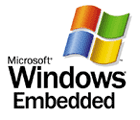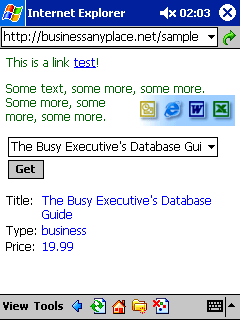
 |

|
| ActiveWin | Active Network | Articles | Editorials | Interviews | FAQ's | Forums |
|
|
|
|
|
DirectX |
|
ActiveMac |
|
Downloads |
|
Forums |
|
Interviews |
|
News |
|
MS Games & Hardware |
|
Reviews |
|
Support Center |
|
Windows 2000 |
|
Windows Me |
|
Windows Server 2003 |
|
Windows Vista |
|
Windows XP |
|
|
|
|
|
|
|
News Centers |
|
Windows/Microsoft |
|
DVD |
|
Apple/Mac |
|
Xbox |
|
News Search |
|
|
|
|
|
|
|
ActiveXBox |
|
Xbox News |
|
Box Shots |
|
Inside The Xbox |
|
Released Titles |
|
Announced Titles |
|
Screenshots/Videos |
|
History Of The Xbox |
|
Links |
|
Forum |
|
FAQ |
|
|
|
|
|
|
|
Windows XP |
|
Introduction |
|
System Requirements |
|
Home Features |
|
Pro Features |
|
Upgrade Checklists |
|
History |
|
FAQ |
|
Links |
|
TopTechTips |
|
|
|
|
|
|
|
FAQ's |
|
Windows Vista |
|
Windows 98/98 SE |
|
Windows 2000 |
|
Windows Me |
|
Windows Server 2002 |
|
Windows "Whistler" XP |
|
Windows CE |
|
Internet Explorer 6 |
|
Internet Explorer 5 |
|
Xbox |
|
Xbox 360 |
|
DirectX |
|
DVD's |
|
|
|
|
|
|
|
TopTechTips |
|
Registry Tips |
|
Windows 95/98 |
|
Windows 2000 |
|
Internet Explorer 5 |
|
Program Tips |
|
Easter Eggs |
|
Hardware |
|
DVD |
|
|
|
|
|
|
|
ActiveDVD |
|
DVD News |
|
DVD Forum |
|
Glossary |
|
Tips |
|
Articles |
|
Reviews |
|
News Archive |
|
Links |
|
Drivers |
|
|
|
|
|
|
|
Latest Reviews |
|
Xbox/Games |
|
Fallout 3 |
|
|
|
Applications |
|
Windows Server 2008 R2 |
|
Windows 7 |
|
|
|
Hardware |
|
iPod Touch 32GB |
|
|
|
|
|
|
|
Latest Interviews |
|
Steve Ballmer |
|
Jim Allchin |
|
|
|
|
|
|
|
Site News/Info |
|
About This Site |
|
Affiliates |
|
Contact Us |
|
Default Home Page |
|
Link To Us |
|
Links |
|
News Archive |
|
Site Search |
|
Awards |
|
|
|
|
|
|
|
Credits |
ActiveWin: Microsoft Windows XP Embedded & Windows CE - What Is It All About?
|
Written By:
Alex Harris |
Most people know of the Microsoft Windows range for the home which includes Windows 95, 98, 98 Second Edition, Millennium Edition (also know as ME) and the two XP's - Home and Pro. There are though a couple out there that not so many have heard of. Probably the better known of the two is Windows CE which is used on the majority of the PDA's on the market at the moment. The other one is Windows XP Embedded.
Windows XP Embedded
Here is the Microsoft low down on what Windows XP Embedded is:
|
"Windows XP Embedded is the componentized version of the leading desktop operating system, enabling rapid development of the most reliable and full-featured connected devices. " |
Windows XP Embedded is the componentized version of the leading desktop operating system, enabling rapid development of the most reliable and full-featured connected devices. Based on the same binaries as Windows XP Professional, Windows XP Embedded enables embedded developers to individually select only the rich features they need for customized, reduced-footprint embedded devices.
Building upon the proven code base of Windows 2000, Windows XP Embedded delivers industry-leading reliability, security, and performance along with the latest multimedia Web browsing capabilities, and device support. Windows XP Embedded also incorporates the latest embedded-enabling capabilities such as headless support and flexible boot and storage options. In addition, Windows XP Embedded contains a completely redesigned tool set, called Windows Embedded Studio, which enables developers to rapidly configure, build, and deploy smart designs.
That information is all well and good, but it still doesn't tell us what Windows XP Embedded actually is. Well, it is the successor to Microsoft Windows NT Embedded 4.0 and is based on the same binaries as Windows XP Professional. It enables the user to rapidly develop a reliable and a full- featured connected device. When the developers of Windows XP Embedded was developing this operating system they concentrated on three main areas. That was Componentization, Incorporating the latest embedded capabilities into Windows XP Embedded and Completely redesigning the rich, end-to-end development tools to enable devices based on Windows XP to be brought to the market more quickly. Some of the new tools included in Windows XP Embedded were:
- Target Designer: Enables you to manipulate components and easily build a custom operating system image. For example, new design templates in Target Designer help you quickly generate a base configuration for various devices by providing all the base functionality you need for a specific device type. In addition, Target Designer offers automated dependency checking, an auto-generated task list, and a hosted build process.
- Target Analyzer: Probes your target hardware and automatically collects the necessary information to generate a base operating system configuration that supports your chosen hardware.
- Component Designer: Assists you in converting your unique drivers and applications into components which can then be used in your custom operating system image.
- Component Database Manager: Manages all of the components you have at your disposal and facilitates a high performance integrated build environment.

Windows CE .NET
Windows CE .NET is the more well known
of the two, just for the fact that if you have a recent PDA then you have
Windows CE .NET running on it. Windows CE .NET is the successor to Windows
CE 3.0. Windows CE .NET offers a very robust real-time operating system for
building the next generation of smart mobile and small footprint devices.
The main areas that the development team looked at when they were developing
Windows CE .NET was:
- Providing scalable wireless technologies to flexibly connect mobile devices.
- Providing reliable core operating system services for demanding real-time designs.
- Enabling personalized experiences that span devices, PCs, servers, and Web services.
- Delivering a rich, easy-to-use, end-to-end tool set.
|
"Windows CE .NET offers a very robust real-time operating system for building the next generation of smart mobile and small footprint devices." |
Also, Windows CE .NET has been optimized for the next generation of smart connected devices requiring rich networking, hard real-time, smaller footprints, and rich multimedia and Web browsing.
This is where things start to get a bit technical. in Windows CE .NET - Code is executed by one of the primary components of the .NET Framework, the Common Language Runtime (CLR). The CLR is a high-performance execution engine which provides run-time services such as memory management, cross-language inheritance, code access security, and automatic lifetime control of Microsoft objects. Visual Studio .NET provides the development environment for creating managed code:
- Visual Studio .NET
Simplifies the development and deployment of distributed XML Web services and applications. Visual Studio .NET takes full advantage of the .NET Framework, which uses public Internet standards to enable integration with new and existing applications running on any platform. Visual Studio® .NET includes many new enhancements to Microsoft Visual Basic® and Microsoft Visual C++® development systems as well as a new programming language, Visual C#™. Visual Studio .NET supports the following languages for writing applications using managed code: - Visual Basic .NET: Visual
Basic .NET now offers full object-oriented language features, including
implementation inheritance and visual inheritance for forms when writing
Web applications. It also
allows developers to create highly scalable code with explicit free threading and highly maintainable code with the addition of modernized language constructs like structured exception handling.
- Visual C++ .NET: Visual C++ .NET provides deep support for creating Web services using the C++ development language. This development environment comprises the industry standard Active Template Library (ATL) and Microsoft Foundation Class (MFC) libraries, advanced language extensions, and powerful integrated development environment (IDE) features enabling efficient editing and debugging. Traditional unmanaged C++ and new managed C++ code can be mixed freely within the same application. Existing components can be wrapped as .NET-enabled components by using the managed extensions, preserving investment in existing code while integrating with the .NET Framework.
- Visual C# .NET: C#, pronounced "C sharp," is a modern, object-oriented, type-safe language. It enables programmers to quickly build a wide range of applications for the new Microsoft .NET platform. Visual C# .NET is designed to bring rapid development to the C++ programmer without sacrificing the power and control that have been a hallmark of C and C++.
So the question is, which of these would you need if you were going to create an embedded device? Well conveniently there is a table below which shows you the differences between the two:
| Targeted Device | Windows XP Embedded | Windows CE .NET |
| Mobile Clients | X | |
| PDA | X | |
| Smart Phone | X | |
| Web Pad | X | |
| Internet/Media Appliance | X | X |
| PC Companions | ||
| Digital Cameras | X | |
| Printers/Scanners | X | X |
| Thin Clients | ||
| Retail Point of Sale | X | X |
| Windows-based Terminals | X | X |
| Connected Clients | ||
| Basic Set-top Box | X | |
| Advanced Set-top Box | X | |
| Basic Residental Gateways/Servers | X | |
| Advance Residental Gateways/Servers | X | |
| Industrial Controls | X | X |
As you can see, in many cases the features and functionality of a particular device category can significantly influence your choice of operating systems. Devices that you can hold in the palm of your hand, such as mobile clients and digital cameras, require the smallest footprint and careful power management. Windows CE .NET can best address some of these requirements. Devices that require the richer functionality and latest security, such as advanced set-top boxes and residential gateways, are better served by Windows XP Embedded. In the cases of thin clients, connected clients, and some PC companions, you will need to evaluate both operating systems within the context of your specific design requirements.
There is a lot more information out there about what Windows CE and Windows XP Embedded can do and offer. The aim of this was to show people the general differences between the two systems and what they might be used for.
